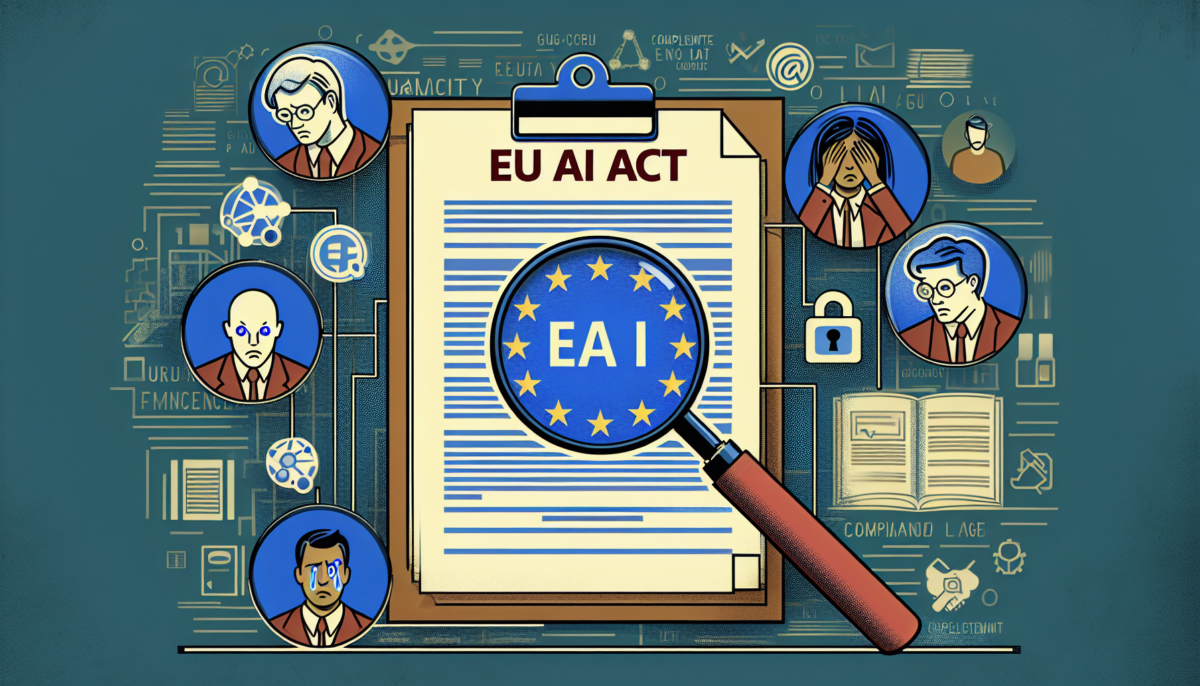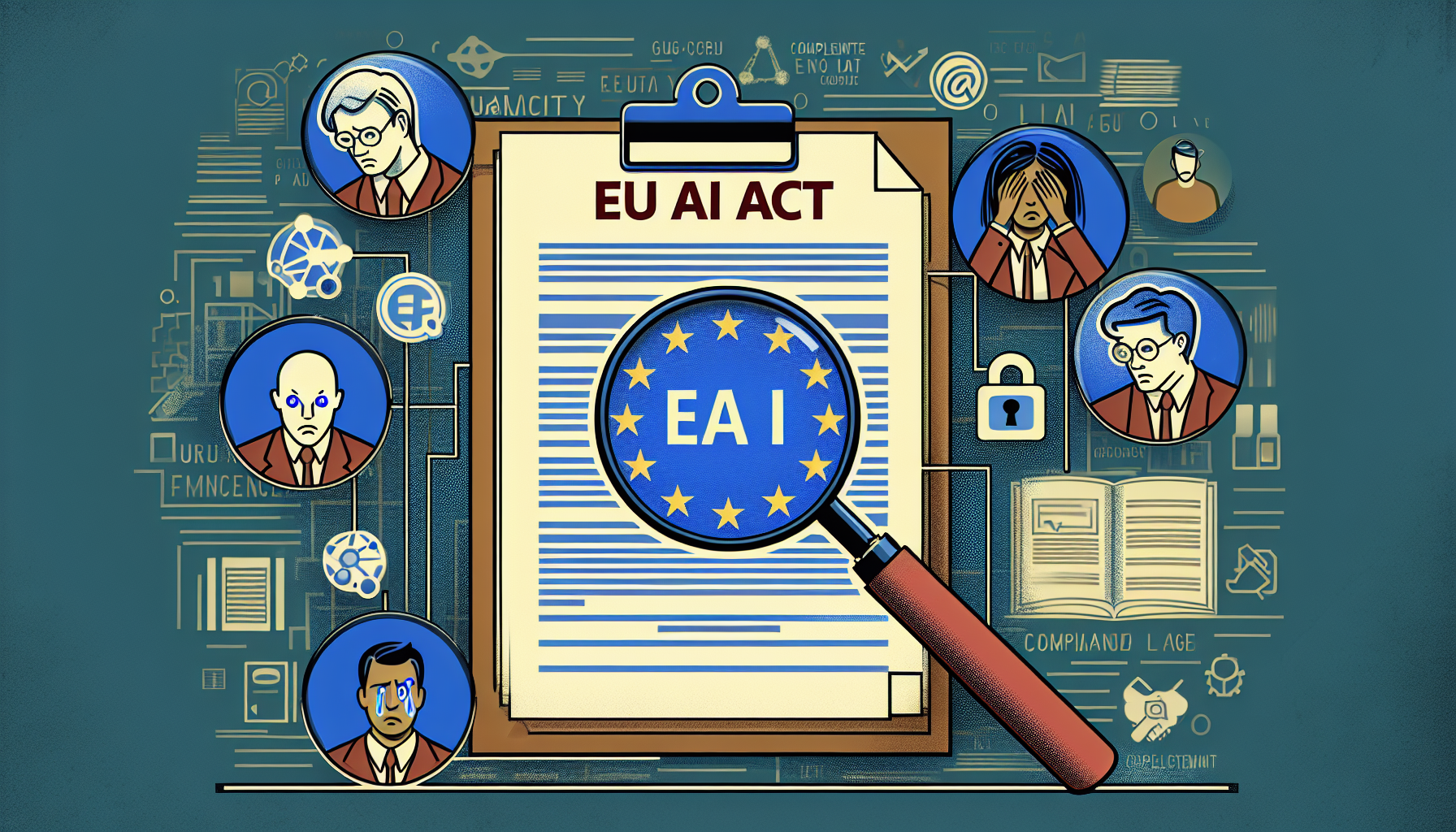“EU AI Act Examination Reveals Compliance Difficulties for Major Tech”
We independently review everything we recommend. When you buy through our links, we may earn a commission which is paid directly to our Australia-based writers, editors, and support staff. Thank you for your support!

EU AI Act: Major Tech Companies Confront Compliance Obstacles
The recent EU AI Act is exerting pressure on some of the leading artificial intelligence frameworks globally, exposing significant vulnerabilities in areas like cybersecurity and biased outputs. As the regulations of the Act begin to take effect, a novel instrument created by LatticeFlow AI is highlighting where firms like Meta, OpenAI, and others may be lacking.
Quick Read
- The EU AI Act enforces rigorous compliance requirements for AI systems, with emphasis on cybersecurity and bias.
- LatticeFlow AI’s LLM Checker evaluates AI systems from entities such as OpenAI, Meta, and Alibaba.
- Non-compliance could lead to fines reaching €35 million or 7% of global revenue.
- AI from OpenAI, Meta, and Alibaba display shortcomings in critical domains like biased output and cybersecurity.
- Anthropic’s Claude 3 Opus rates highest on compliance, whereas other models perform less favorably.
- Complete compliance enforcement measures are scheduled to be in place by 2025.
Overview of the EU AI Act
With artificial intelligence (AI) progressively becoming part of daily life, the European Union has proactively introduced the EU AI Act. This legislation aims to impose strict regulations on artificial intelligence systems, particularly those identified as “general-purpose” AIs (GPAI), which encompasses tools like OpenAI’s ChatGPT.
The AI Act is slated to be fully operational over the next two years, with requirements to ensure that AI systems are competent, secure, and devoid of bias. Companies that do not meet these regulations could face substantial fines of up to €35 million (A$56.6 million) or 7% of their global annual revenue.
Evaluating AI Models for Compliance
A new instrument crafted by Swiss startup LatticeFlow AI, in partnership with ETH Zurich and Bulgaria’s INSAIT, seeks to assist major tech firms in assessing their AI models’ adherence to the AI Act. The instrument, referred to as the “Large Language Model (LLM) Checker,” analyzes AI models across various criteria, including technical robustness, safety, cybersecurity resilience, and bias detection.
The LLM Checker awards a score between 0 and 1 in each category, providing insights into potential deficiencies. Scores over 0.75 signify a solid level of compliance; however, numerous leading models have garnered lower ratings in critical areas.

Shortcomings Among Major Tech Firms
While the LLM Checker indicates a generally optimistic performance for certain models, notable weaknesses have been pinpointed in essential areas. For example, OpenAI’s GPT-3.5 Turbo received a score of only 0.46 for discriminatory output, raising ongoing concerns about AI model bias. Alibaba Cloud’s “Qwen1.5 72B Chat” didn’t perform better, with a score of 0.37 in the same category.
Concerns regarding cybersecurity resilience are also present. Meta’s “Llama 2 13B Chat” scored a mere 0.42 for “prompt hijacking,” a cyber threat capable of coercing AI systems into revealing sensitive data. Similarly, French startup Mistral’s “8x7B Instruct” model scored low at 0.38.
Top Performers and Improvement Areas
Among the evaluated models, Anthropic’s “Claude 3 Opus” distinguished itself as the highest achiever, securing an impressive score of 0.89 overall. This serves as a strong indication that models can attain high compliance rates with appropriate attention and resources.
Nonetheless, the varied results underscore the difficulties that major tech players confront in aligning their models with the demanding standards of the AI Act. Companies that do not rectify these issues could face severe repercussions as the EU prepares for thorough enforcement of the Act by 2025.
Strategies for Full Compliance
As the timeline toward complete enforcement of the AI Act approaches, firms are encouraged to utilize tools like the LLM Checker to pinpoint and rectify gaps in their AI models. LatticeFlow CEO Petar Tsankov conveyed optimism for the future, noting that the findings offer firms a clear path to ensure compliance.
“The EU is still finalizing all compliance benchmarks, but we can already detect gaps in the models,” remarked Tsankov. “With enhanced focus on compliance optimization, we trust that model providers can be adequately equipped to satisfy regulatory demands.”
Conclusion
The EU AI Act is poised to reshape the compliance landscape for artificial intelligence, particularly concerning generative models such as ChatGPT. Initial assessments by LatticeFlow’s LLM Checker indicate that while certain AI models are performing commendably, others struggle significantly in critical areas like bias and cybersecurity. With the looming threat of substantial financial penalties, major tech firms must prioritize compliance to avoid contravening the newly implemented regulations.
Q: What is the EU AI Act?
A:
The EU AI Act is an extensive series of regulations designed to guarantee the safety, equity, and transparency of artificial intelligence systems. It places particular emphasis on general-purpose AI models, including those utilized for natural language processing (e.g., ChatGPT). The Act requires that AI systems fulfill specific standards related to cybersecurity, bias prevention, and technical robustness.
Q: What is the LLM Checker tool?
A:
The LLM Checker is a tool created by LatticeFlow AI in partnership with research institutions ETH Zurich and INSAIT. It assesses AI models across a variety of categories, such as safety, cybersecurity, and bias detection. The tool provides a score ranging from 0 to 1, assisting firms in identifying areas where their AI systems may not adhere to the EU AI Act.
Q: What consequences do companies face for non-compliance?
A:
Companies that neglect compliance with the EU AI Act may incur fines of up to €35 million (A$56.6 million) or 7% of their global annual turnover. Given the significant stakes, ensuring compliance is critical for any organization developing or employing AI models within Europe.
Q: What primary compliance challenges have been identified thus far?
A:
The LLM Checker has pinpointed numerous significant compliance challenges, including bias in AI models and susceptibility to cyber threats like “prompt hijacking.” For instance, OpenAI’s GPT-3.5 Turbo received a poor rating for discriminatory output, while Meta’s Llama 2 showed weaknesses in cybersecurity resilience.
Q: How can companies prepare for the AI Act?
A:
Organizations can leverage tools like the LLM Checker to evaluate their AI models and identify weaknesses in aspects such as bias and cybersecurity. By proactively addressing these concerns, businesses can ensure they comply with the standards outlined in the AI Act and avert notable fines.
Q: When will the EU AI Act be fully enforced?
A:
The EU AI Act will be implemented in phases, with full enforcement anticipated by 2025. Meanwhile, the EU is developing a code of practice for generative AI models, which will serve as a compliance benchmark.
